Sadly, SEOs regularly have to endure two difficult conversations about keyword rankings.
- Attempting to explain the value of tracking keyword positions.
- Trying to convey what return acquiring higher rankings delivers for a business.
In the context of the organizations, both conversations are important, but in enterprise SEO we have to look beyond these metrics to understand the true impact.
To others in the greater digital marketing or product teams, overall ranking changes are not necessarily indicators of the impact SEO might have on the bottom line, especially when SEO teams focus on specific keyword rankings and rank tracking.
Even for the enterprise SEO, it's important to focus on your overall search visibility and not just search rankings.
Puzzled? Let me explain it further.
The Problems with Keyword Rankings
To understand the problem, we have to look at the evolution of keyword rankings.
Keyword rank indicates the position a particular piece of content takes on the SERP for a particular keyword. Historically, the SERPs included ads at the top, followed by organic search results.
As SEOs, we'd consider the first organic result as Rank 1, and establish other rankings from there.
Tracking rankings was useful because keyword data was available in Google Analytics. We could establish quickly which phrases drive the best visitors, and correlate that with their ranking positions to evaluate them further.
As a result, rankings become the key success metric. It was easy to define the potential impact of improving keyword positions on the company's bottom line (and track those results too.)
This is all gone now. Google Analytics doesn't report on the keyword data, and the SERP has evolved so much that establishing the actual rank position has become impossible for many phrases.
Recommended Reading: SEO Basics: The Uncomplicated Guide to Simplifying SEO
Challenges with Using Keyword Rankings as the Primary SEO Metric
To any SEO manager, higher search rankings automatically equal a boost in search visibility, and what goes with it, the potential for higher traffic and more conversions. However, I doubt that anyone unaccustomed to SEO processes would see them as anything more than a nice-looking shift upward on a graph.
Certainly, they wouldn’t connect it with the increase in traffic and more conversions - the results most organizations are looking for.
Hence those two previously mentioned conversations.
Tracking Keyword Positions in SERPs Pose a Problem to SEOs, Too.
It's hard to receive accurate keyword rankings.
With localized and personalized search results, different devices used to conduct search and countless other factors; it’s hard to consider rankings as universal.
Let's evaluate those results closer.
Personalized Results
In the past, we'd all see pretty much the same search results. Today, however, Google delivers personalized SERPs, based on the person's search history.
Personalized SERPs have improved the search experience, no doubt. A tech buff looking for information about Apple isn't likely to see dietary information in SERPs anymore but will get results tailored to their interests.
From SEO point of view, the personalized SERP means that we cannot be absolutely sure where our content ranks, fully. Having said that, we can establish that pretty closely.
Location
Another factor making SERPs unique is the searcher's location. For the last number of years, Google has been improving their ability to understand the search query, and deliver the results matching the person's intent. This also means taking into consideration where the person is (because they might be looking for local information).
Device
Finally, the device used to search might also affect keyword rankings.
Quick example: The below report shows search rankings for web and mobile. Notice the differences in positions for the same keyword between the two.
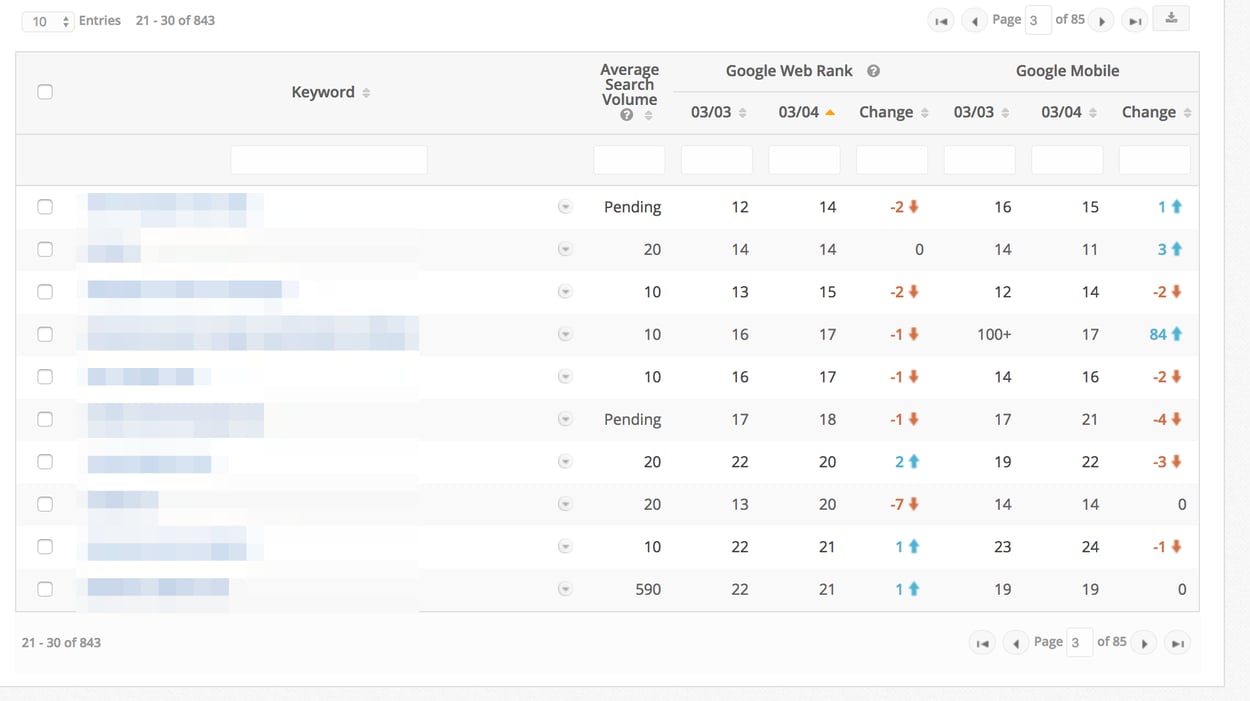
The Issue of the Variety of Search Queries
Searchers no longer use relatively simple and predictable keywords, like they used to. Instead, they feed Google with scraps of information, ask direct questions, and some construct complex queries. You can read more about how semantic search and analysis has taken over.
As a result, your pages often rank for keywords for which you probably have never optimized them.
Unless those keywords send you traffic, it’s almost impossible to know what these phrases are. (And even then, you need to utilize technology for keyword research like Search Analytics to retrieve that missing query data.)
But let me make something clear - I’m not against tracking rankings.
Quite the contrary, in fact. Many competencies in our SEO platform focus on keyword positions. And, many others use them to provide additional insight into your search visibility.
However, I believe that rankings shouldn’t be the main or the only metric by which to analyze SEO progress.
Metrics to Use When Reporting on SEO
It would be impossible to accurately calculate ROI of SEO when leading with rankings. It's also challenging for SEOs to report on the forward progress of their programs without using that most talked about metric.
Metrics that help track ROI of SEO better than rankings include:
- The growth of organic traffic
- Increase in SERPs dominance
- Number of conversions from organic search traffic
- Revenue from organic search
Note that they all depend on rankings. However, for a non-SEO person, they express the value behind tracking SERP positions much better.
Another way to demonstrate progress utilizing the rank position, but present with the overall search visibility. This can demonstrate progress as you build authority in a new product category or collection of new landing pages you added to the site for example. seoClarity's Research Grid validates your overall visibility when you measure progress within a sub-domain (like blog.sitename.com) or a specific section (folder) within your site.

#1. Growth of Organic Traffic
Growing traffic from search engines signifies the quality of your SEO campaigns like nothing else.
After all, that’s exactly what you’re striving towards – getting more people to visit the site from the search results.
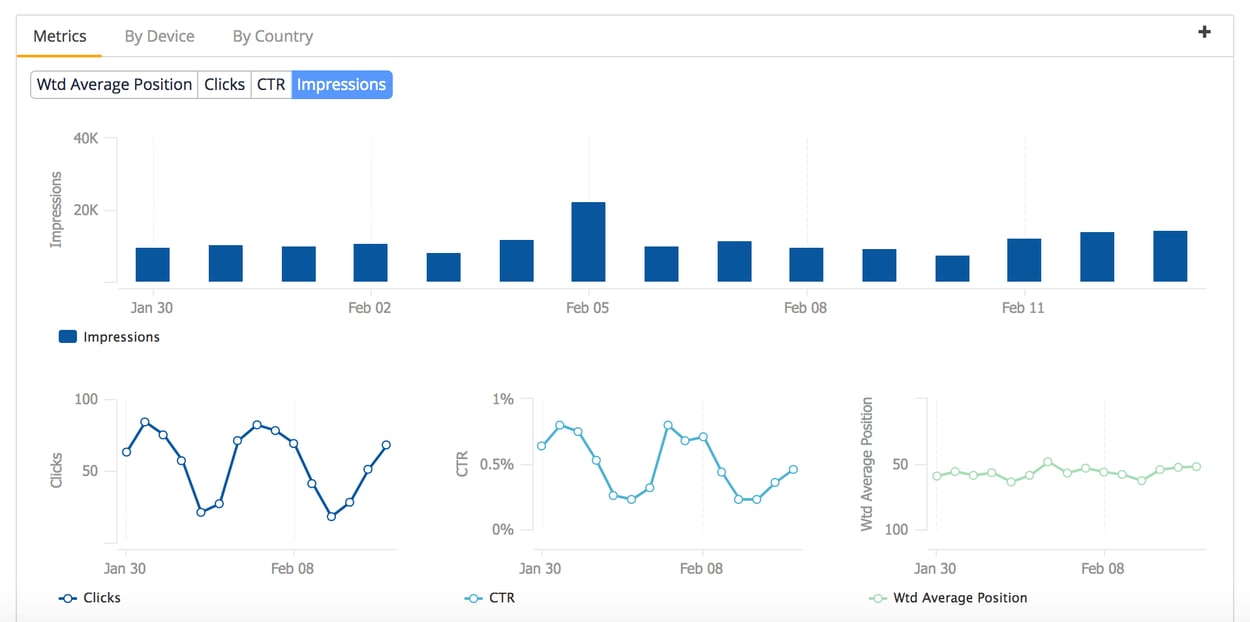
Naturally, market seasonality and other factors might impact the traffic at times. Overall, however, constant growth in the number of visitors from search engines confirms the validity of your actions.
#2. Increase in Search Visibility
Modern SERP includes more than just organic listings. Ads, videos, images, the local pack, Answer Box, and many other universal rank types can help position your content in front of targeted searchers.
A major aspect of SEO then is to promote your brand in those too, further increasing your search visibility.
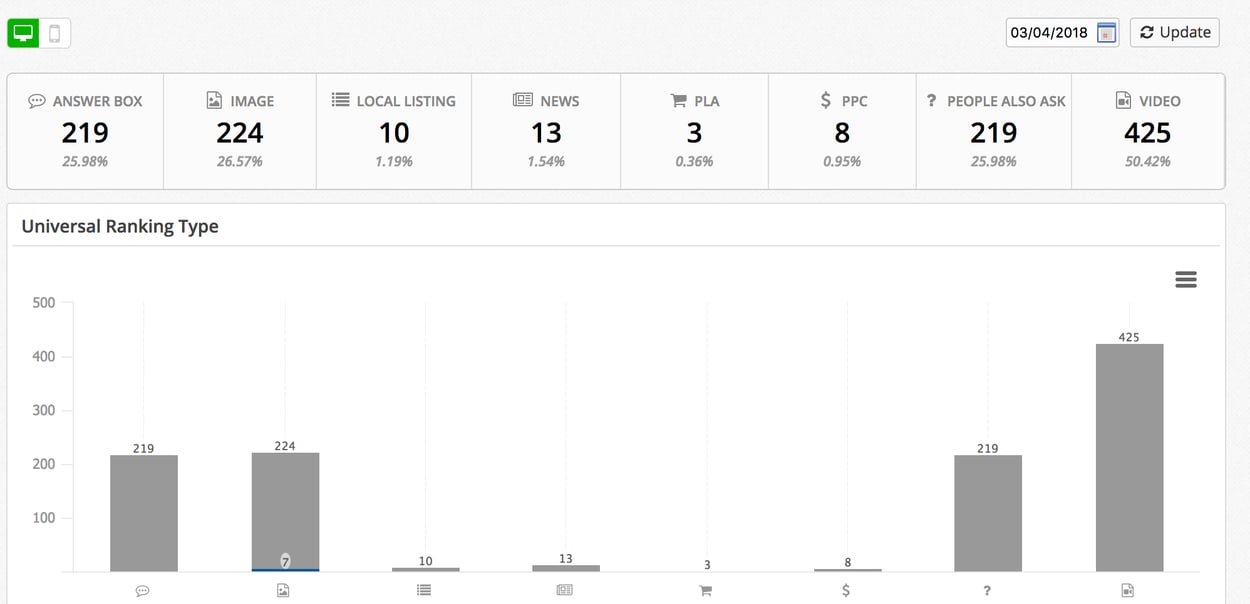
#3. Organic Conversions
It doesn’t matter whether its sales, signups, leads, whitepaper downloads, your organization has direct goals for the website to conclude. Showing how many of those were delivered by your channel helps communicate a very tangible effect SEO has on the bottom line.
#4. Organic Revenue
Similarly, if your website’s primary goal is to sell products or services and conclude the transaction online, then, attribute relevant revenue to SEO to showcase your impact on the business’ growth.

Metric to Measure Progress Internally
When assessing the success rate of your SEO strategy, monitor:
- Increase in overall search visibility
- Search traffic engagement
- Search queries
As with the other group, these metrics rely heavily on rankings. However, they extend that insight with custom reports and additional factors revealing more potential to follow.
#1. Search Performance
The more people see your pages in SERPs, the greater the chance for more visitors, conversions, and sales.
And that’s exactly the insight you get from tracking search rankings. However, given different ways in which we search, the often acquired higher SERP positions isn’t enough to warrant the increase in traffic.
For example, many searchers scan the results page, looking for relevancy. With them, it doesn’t matter where you rank, since they focus on finding listings that promise answers to their questions.
You need additional data to assess the performance of your listings – click-through rate and impressions.

#2. Engagement
Usability plays an integral part of SEO today. In fact, I consider it fundamental to achieving higher rankings and boosting search traffic.
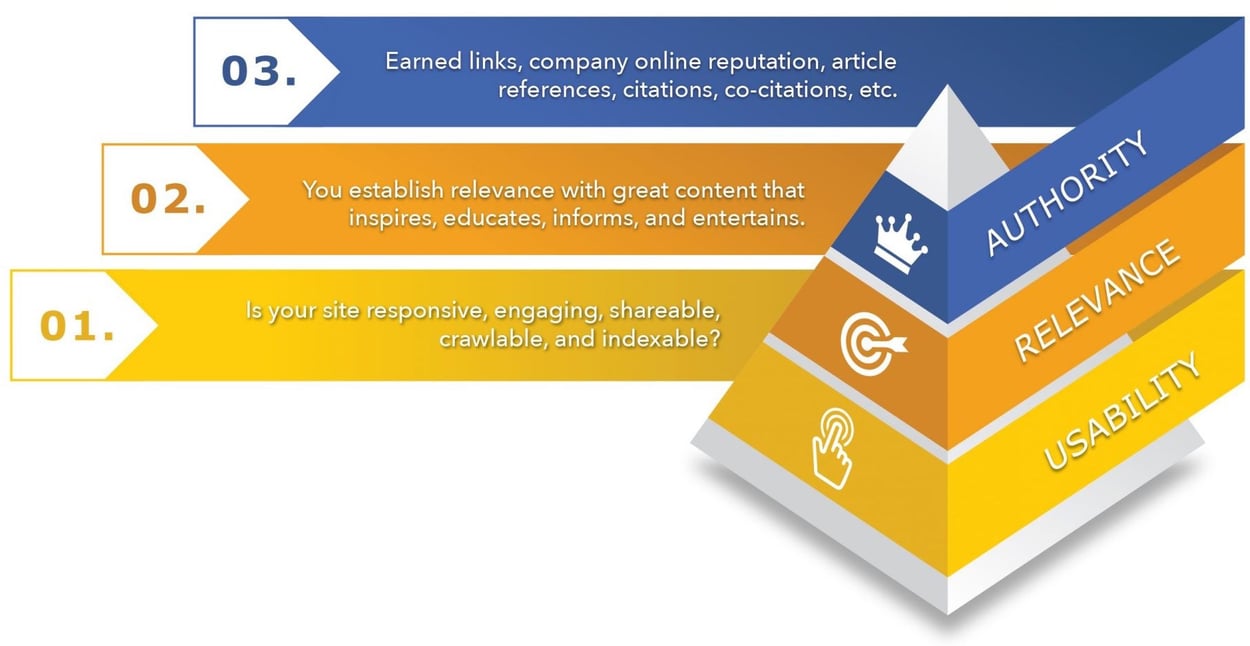
(seoClarity’s Search Experience Optimization Framework)
No surprise that a significant number of Google’s ranking factors relates to usability and user experience. Factors like the organic CTR, dwell time, repeat traffic, number of comments, bounce rate, time on site signify whether users have found your content valuable and easy to consume.
Use those metrics internally as well to assess the quality of your pages and identify potential issues to eliminate.
#3. Quality of Search Queries
Four years ago, we lost the most crucial data we needed for our work – the search query.
And if you remember the introduction of term 'not-provided', you know that losing the visibility to the search data was a tough pill to swallow. Practically overnight, we lost the ability to make data-informed decisions about what campaigns and strategies to work on next.
What’s more, we could no longer assess whether we’re actually attracting the right traffic.
But now we can again. Search Analytics lets you reverse the “not provided” data and identify close to 100% of keywords driving traffic to your site. Use this information to evaluate what visitors your channel is bringing to the site, how relevant their search queries are to your content, and whether those pages match the person’s intent.
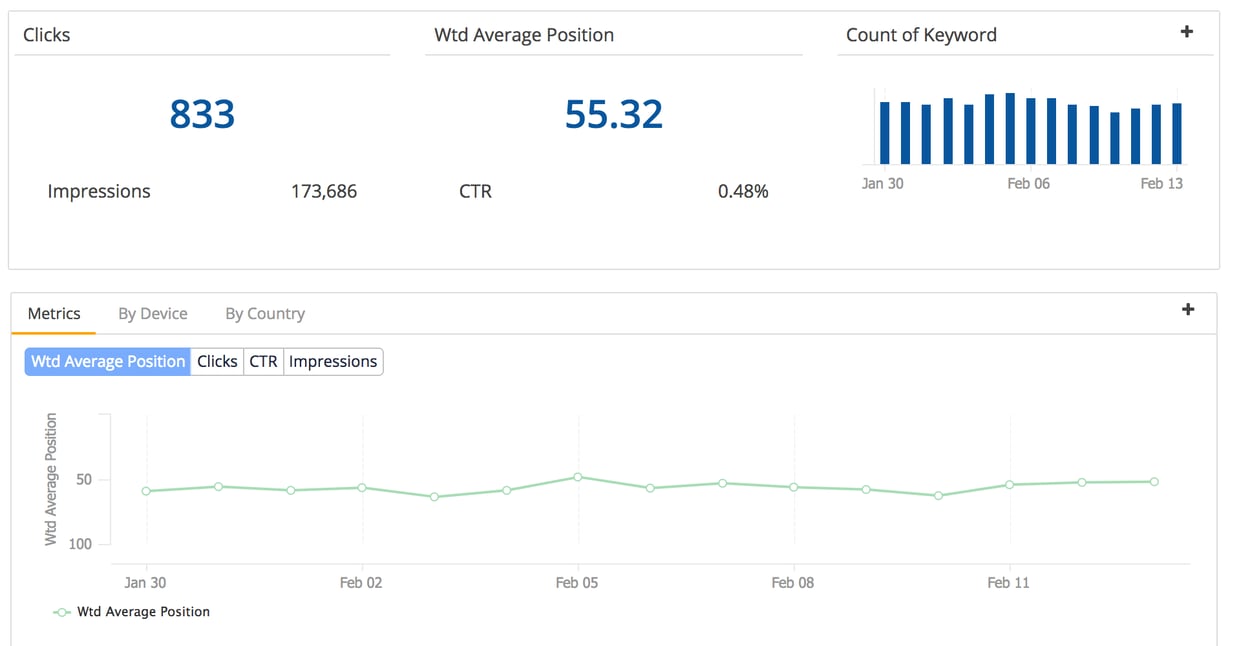
What About Monitoring Rankings?
Well, I do believe that there is a place for keyword rankings in SEO reports; however, they should be tracked for a different purpose.
Instead of monitoring keyword rankings to determine SEO success, use them to identify potential problems with your site's search visibility. Any such problems will manifest themselves with a drop of traffic, after all. And that's regardless of the searcher's location, device or other factors.
Having said that, analyzing those factors closer might help identify the reason for the drop, actually.
Combining impressions and click-through rate with rankings can also help uncover under-performing content that you could improve and push forward.
Recommended Reading: Yes, It's Still Important to Track Keyword Rank
Closing Thoughts
The usefulness of rankings is irrefutable. Without continuously improving positions in SERPs, any organic growth simply wouldn’t happen. On their own, however, rankings provide insufficient insight to prove the effectiveness of SEO.
Other metrics that achieve this objective better include organic traffic growth, conversions, or revenue.
Find out how our enterprise SEO tools structure and scales your ability to report your progress and understand your performance to all levels within the organization outside of just ranking.
Editor's Note: This post was originally published in March 2018 and has been updated for accuracy and comprehensiveness.





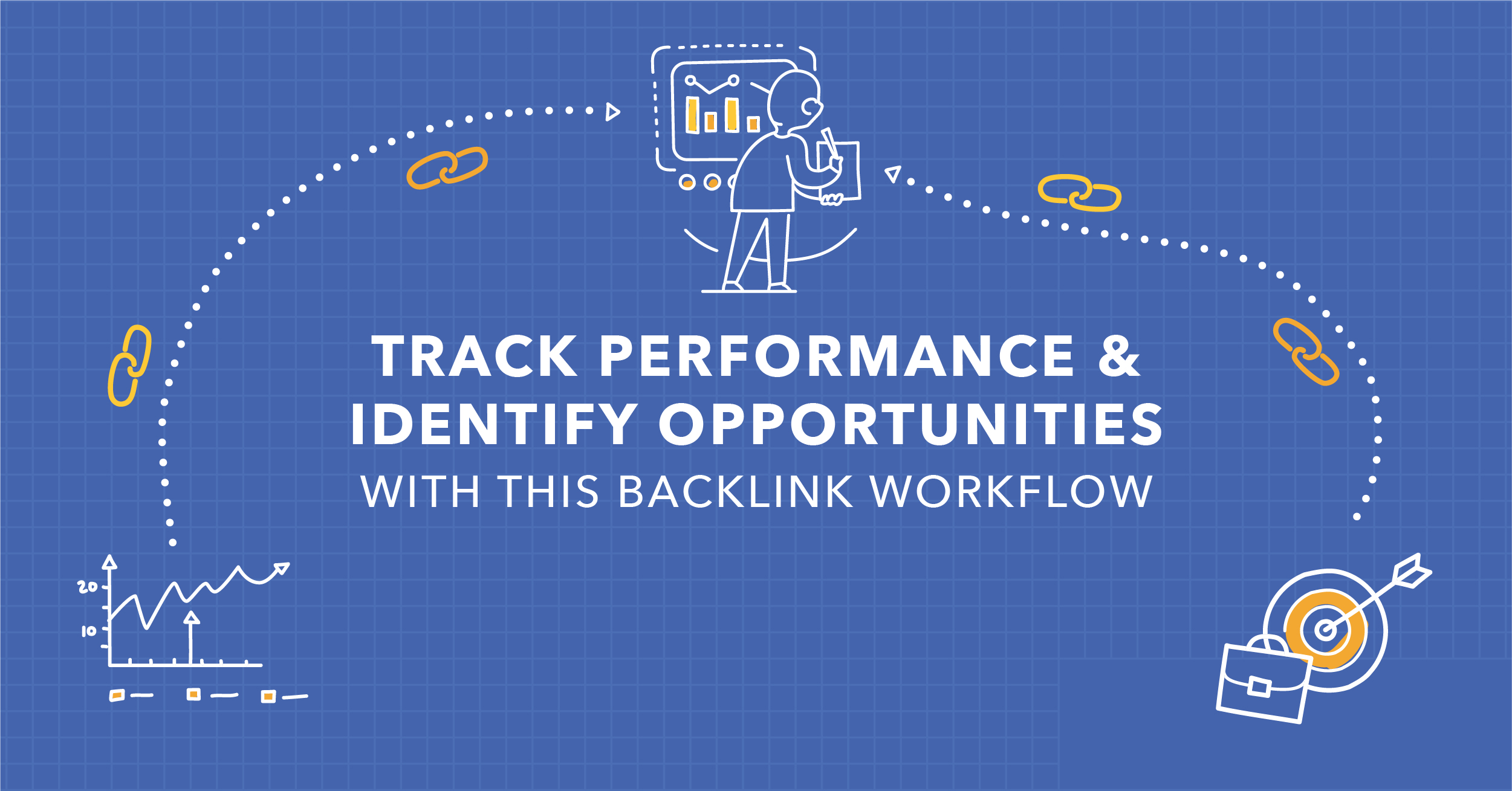

Comments
Currently, there are no comments. Be the first to post one!